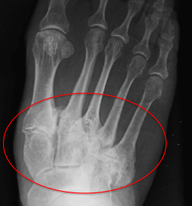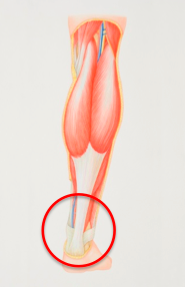Arthritis
What is arthritis?
By definition, arthritis is a painful condition that can affect any joint in your body. In the lower extremity, the joints that are typically affected are your knee, ankle and the small joints in your feet.
Arthritis leads to a destruction of the cartilage inside the joint and eventual deformity. On an x-ray, this is characterized by joint space narrowing, bone spur formation, and swelling around the joint.
Causes
Some form of trauma to the joint usually causes osteoarthritis but age, weight, and changes in foot structure are variables that can impact the development of arthritis. Other causes include inflammatory conditions such as rheumatoid and psoriatic arthritis or infections from viruses and bacteria.
Symptoms
- Joint pain
- Bone spurs, joint swelling
- Difficulty walking
- Stiff joints
Diagnosis
Your foot doctor will evaluate all of your joints to assess their range of motion and to see if there is any limitation in movement. X-rays are typically ordered to evaluate affected joints in more detail. This will help in assessing the severity of the condition to dictate the most appropriate treatment.




